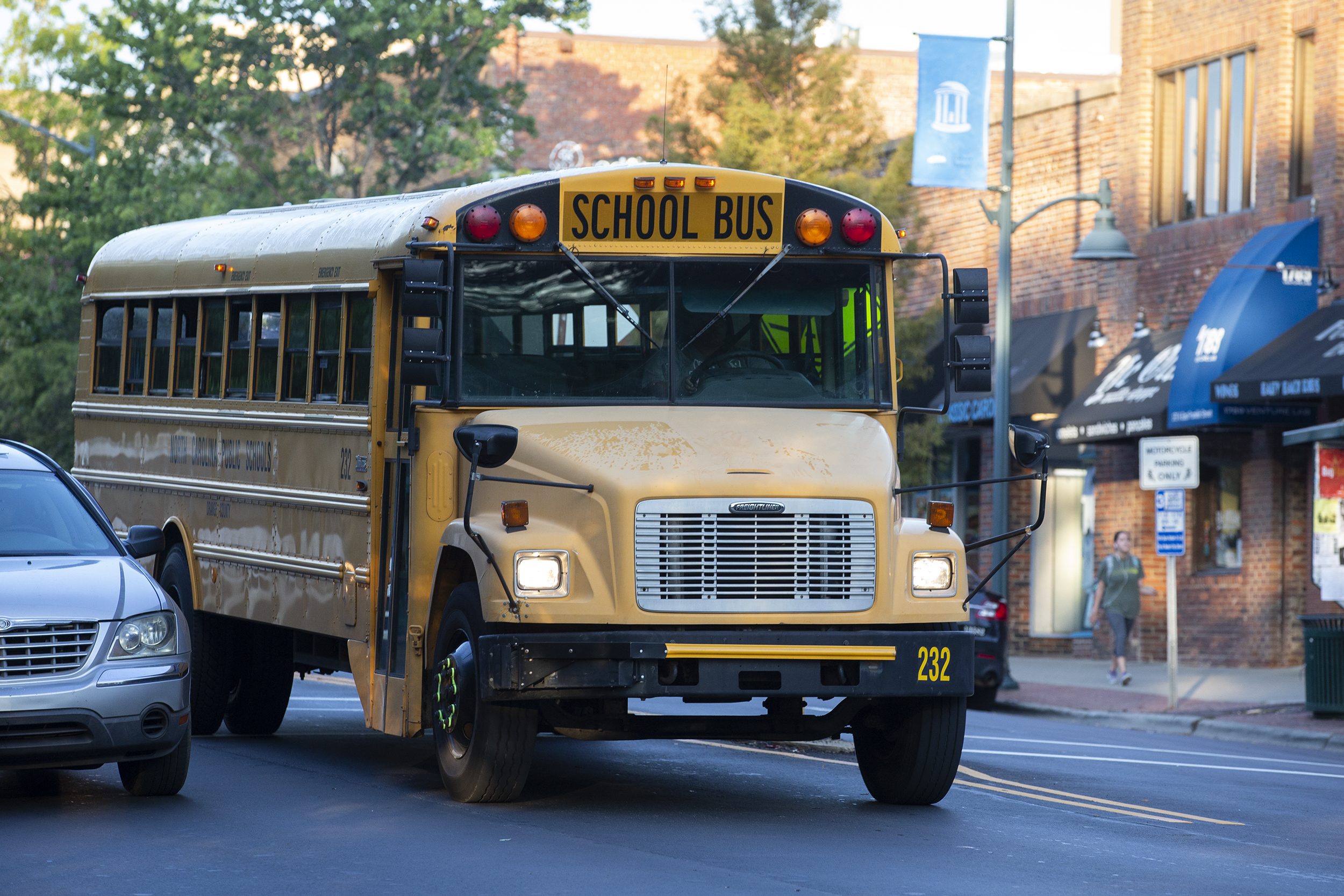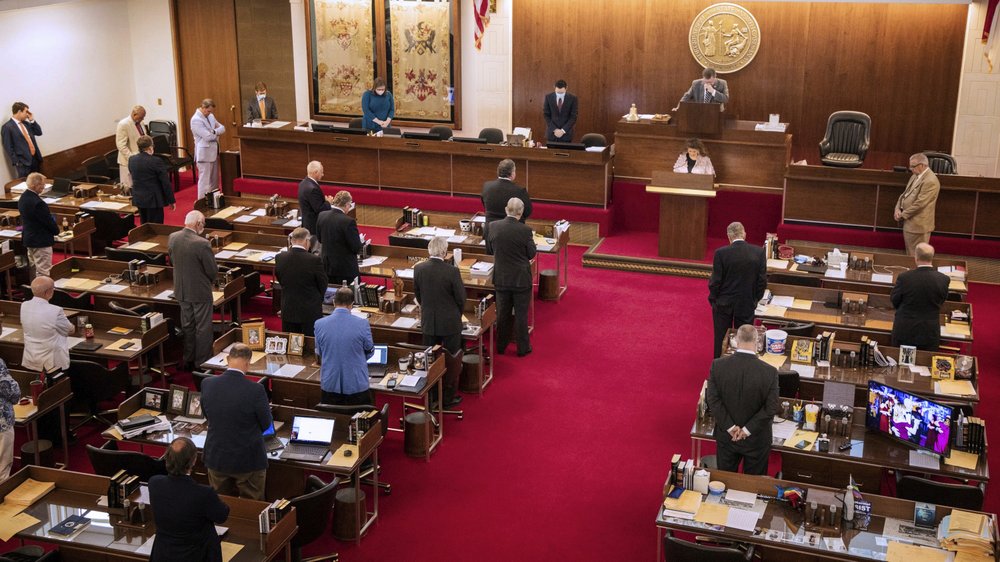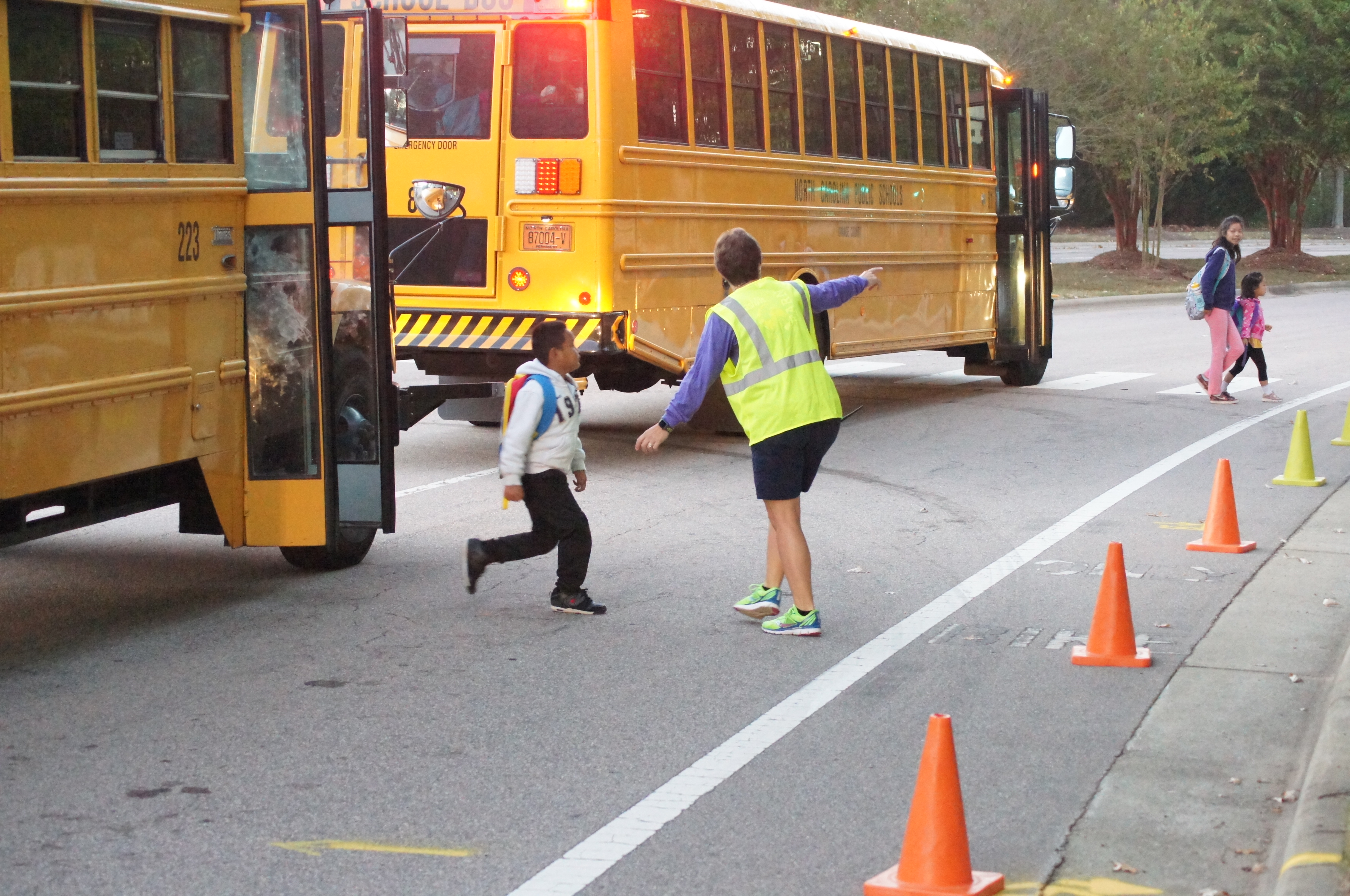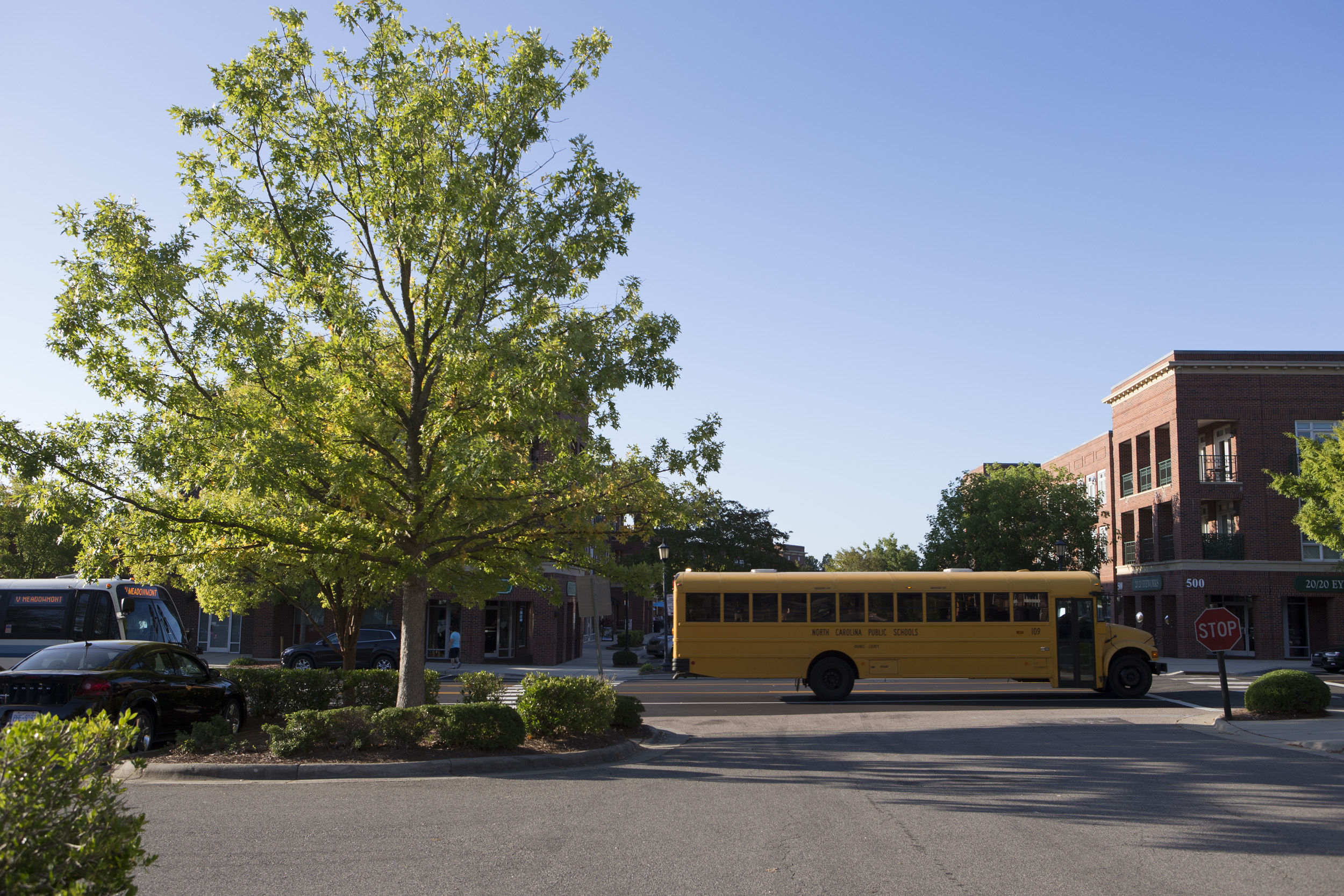The Chapel Hill-Carrboro City Schools Board of Education heard a recommended plan from its interim superintendent to have some students begin a hybrid learning model in January.
The plan, presented by Interim Superintendent Dr. Jim Causby on Thursday, would allow the CHCCS system to prepare for a transition to Phase 2, which would include in-person elements of instruction. The board did not take action on the plan, choosing to alter Causby’s recommendation and wait for approval until changes are finalized in writing.
The weekly schedule, if fully approved by the board, would split the student bodies into cohorts that would meet either on Mondays and Tuesdays or Thursdays and Fridays. The method would decrease in-person class sizes, create more room to physically distance and give all students the choice to have some in-person instruction. Wednesdays would be used to fully sanitize each campus building.
Causby and the district staff’s recommended calendar says students with adapted curriculum would begin Phase 1 with in-person learning elements in mid-November. Students in Pre-K through 2nd grade would have orientation the week of January 25, with students in 3rd grade through 5th grade returning for orientation the week of February 8. Orientation for middle school students would begin the following week, with high school students going through orientation the week after, meaning the district would be in a full hybrid learning model by March 1.
According to the plan, CHCCS parents will have the option to keep their child or children in a remote learning plan through the rest of the academic year.
Causby said while the remote learning has worked well for many families, this model would help the district meet its obligation to families and children who have struggled most with online learning.
“It’s an important topic in every single family in Chapel Hill-Carrboro,” said Causby on Thursday.
The interim superintendent also addressed how this plan would not be an immediate fix for many families. While students would eventually return to campuses, they would not be receiving in-person instruction each day. Additionally, other students would remain entirely remote and some teachers might as well. CHCCS said this could lead to a need for some classes having “blended learning,” meaning some classmates would be in-person while others would be attending the same class remotely.
“It’s not the preferred method,” said Causby, “but the only method where you could provide both avenues [of learning.]”
Additional considerations in Causby’s recommended plan included declaring all staff essential workers, meaning they would need to work on site unless granted an exemption from the Human Resources Department, and approving a weekly $250 stipend for staff needed on site ahead of students’ return.
Causby cited the latest COVID-19 data from Orange County and the state of North Carolina, saying the percentage of positive tests in the last month are not meeting the school’s, state’s and federal government’s threshold to resume full in-person instruction.
Several school board members also mentioned their hesitation to approve a reopening plan on Thursday based on the recent changes to the state’s coronavirus trends. The preferred recommendation discussed by the board would have CHCCS staff prepare for a Phase 2 transition before the start of the spring semester, with the board waiting to fully approve it until a clearer impact of a potential winter spread of the virus is reported.
A poll conducted in the last week of the Chapel Hill-Carrboro City Schools community gauged feelings about a close return to in-person learning. From more than 9,000 parents, around 53% of respondents said they would prefer their child attend school in person compared to those who prefer for them to continue learning remotely. The poll of faculty saw 73% respond with their preference of continuing to work remotely compared to teaching on site.
“There is a palatable fear,” said Causby, describing what he’s heard from educators in the CHCCS system regarding a return to in-person instruction. “You can’t webinar away fear.”
CHCCS has been in a fully remote learning model since the late spring semester during the 2019-2020 academic school year. The school board initially passed a similar Plan B hybrid learning plan for the fall 2020 semester in July, but changed its plans to an initial nine weeks of remote learning after hearing feedback from parents and faculty. Shortly after, the Board of Education chose to extend remote learning further, marking the start of the spring 2021 semester as the end of the initial period.
The plan considered by the CHCCS school board Thursday includes several requirements laid out by the North Carolina Board of Education and health officials. All students, teachers and staff members will be required to wear face coverings while on school grounds and symptom screenings, which may include temperature checks, must take place daily. Additionally, markings indoors must be created to indicate six feet of distance in all common rooms and schools must limit any nonessential visitors or activities with external groups.
Orange County’s health department also has protocols CHCCS must follow regarding quarantining students and staff upon a positive test or a suspected positive test.
Governor Roy Cooper announced in September school districts could begin to move elementary students to a Plan A model of learning at the beginning of October, when Phase 3 of reopening began. At the time, the governor said the state government “will not hesitate” to re-implement restrictions on in-person learning if the state sees a resurgence of positive COVID-19 cases this winter or next spring.
The school board indicated they might hold a special meeting to discuss this plan before its next regularly scheduled meeting on November 5, but no date was confirmed on Thursday.
Photo via the Town of Chapel Hill.
Chapelboro.com does not charge subscription fees. You can support local journalism and our mission to serve the community. Contribute today – every single dollar matters.









